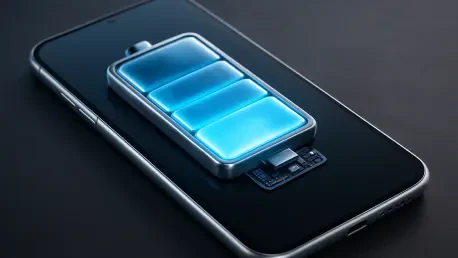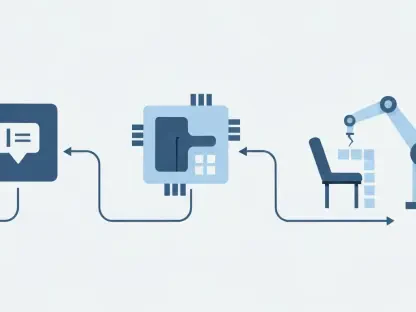In a world where smartphones are indispensable, a staggering 75% of users report battery life as their top concern, according to recent industry surveys, and now the iPhone Air, Apple’s latest innovation, promises not just sleek design but a hidden twist that could redefine how battery woes are tackled. What if a simple accessory could breathe new life into a dying device without breaking the bank? This revelation, buried within the phone’s internals, has tech enthusiasts buzzing with curiosity. Let’s dive into the heart of this groundbreaking gadget to uncover a secret that might just change the game for smartphone longevity.
Unlocking the Secrets of Apple’s Newest Innovation
The iPhone Air stands as a testament to Apple’s relentless pursuit of cutting-edge technology, blending minimalist aesthetics with unexpected internal surprises. Unlike any predecessor, this device introduces a novel approach as the company’s first phone of its kind, sparking intrigue among consumers and experts alike. At the core of this excitement lies a feature so subtle yet impactful that it challenges conventional thinking about smartphone maintenance.
Beyond its glossy exterior, the iPhone Air hides a design philosophy that prioritizes both form and function in ways previously unimagined. This isn’t just about a thinner profile or a sharper display; it’s about what’s under the hood that could alter user experience significantly. The focus here is on a specific element that promises to address one of the most persistent pain points in mobile technology, setting the stage for a deeper exploration.
Why the iPhone Air’s Design Resonates Today
In an era where sustainability drives consumer choices, the iPhone Air emerges as a pivotal player in the conversation about durable and eco-friendly tech. With e-waste projected to grow by 30% over the next decade from 2025 onward, per global environmental reports, the need for repairable devices has never been more critical. Apple’s latest release steps into this spotlight, offering a glimpse of how design can align with pressing ecological demands.
The significance of this phone’s architecture extends beyond mere functionality to address the rising costs of repairs, which often push users to discard devices prematurely. By focusing on internal accessibility, the iPhone Air could potentially reduce the financial burden on owners while contributing to a reduction in electronic waste. This balance of innovation and responsibility underscores why dissecting its build matters now more than ever.
A Closer Look: Highlights from the iPhone Air Teardown
Delving into the iPhone Air’s internals through a meticulous teardown by reparability experts at iFixit reveals a device engineered for surprising simplicity. The phone scores impressively high on the reparability scale, thanks to a streamlined layout that minimizes components, making disassembly almost intuitive. Compared to older models with cumbersome designs, this feels like a breath of fresh air for technicians and DIY enthusiasts.
One striking observation is the compact engineering that maximizes space without sacrificing performance, a hallmark of Apple’s efficiency. However, the real bombshell comes with the discovery of the battery—an exact match to the $99 MagSafe Battery accessory. This unexpected compatibility opens up avenues for users to replace worn-out batteries with an affordable alternative, a detail that could redefine maintenance norms.
The teardown also highlights persistent challenges, such as glued panels and proprietary screws, which temper the otherwise glowing assessment. Despite these hurdles, the overall construction suggests a shift toward user-friendly repairs, a move that could influence future smartphone designs. These insights paint a picture of a device that dares to innovate while grappling with familiar constraints.
Voices from the Field: Expert and Hands-On Perspectives
Industry analysts and tech tinkerers alike have weighed in on the iPhone Air’s unique features, providing a multifaceted view of its impact. iFixit’s team lauds the phone’s thoughtful internal layout, noting that fewer parts mean less complexity during repairs, though they caution against the environmental cost of glued components. Their analysis offers a technical foundation that underscores both promise and limitation in equal measure.
Complementing this perspective, the YouTube channel Phone Repair Guru has put the battery compatibility to the test, confirming that the MagSafe accessory’s battery swaps seamlessly into the iPhone Air. Their hands-on experiment labels this workaround as “a stroke of genius for budget-conscious users,” highlighting its accessibility for those willing to tackle the task. This practical endorsement adds a layer of real-world credibility to the technical findings.
Together, these voices—from detailed dissections to grassroots testing—create a comprehensive narrative around the phone’s strengths and quirks. The consensus points to admiration for Apple’s ingenuity, tempered by a call for greater environmental mindfulness in design choices. Such diverse input ensures a balanced understanding of what this device truly offers to its audience.
Empowering Users: A DIY Battery Swap Guide
For those looking to extend the life of their iPhone Air without hefty service fees, the battery trick using the MagSafe accessory presents a viable solution. Start by purchasing the $99 MagSafe Battery pack, a cost-effective alternative to traditional replacement options offered at premium prices. This initial step makes the process accessible to a wider range of users seeking affordability.
Next, prepare for the swap by securing basic tools and setting up a stable workspace, as precision is key when navigating the phone’s glued panels and delicate internals. The replacement itself involves carefully exchanging the identical battery, a task that demands patience but rewards with renewed device performance. This hands-on approach empowers users to take control of their tech’s lifespan.
Finally, consider the environmental aspect by responsibly recycling or repurposing the leftover casing from the MagSafe accessory to avoid unnecessary waste. While this DIY method requires some technical skill, it stands as a practical fix for extending usage. Mindful disposal of unused parts remains a crucial reminder of the broader impact of such repairs on sustainability efforts.
Reflecting on a Game-Changing Discovery
Looking back, the exploration of the iPhone Air unveiled a device that captivated with its blend of innovation and practicality, particularly through its unexpected battery solution. The teardown process shed light on a design that favored repair ease, while expert and user insights grounded the findings in real-world relevance. Each revelation built a compelling case for Apple’s evolving approach to smartphone engineering.
The journey through the phone’s internals prompted a deeper appreciation for how small design choices could yield significant user benefits, even as challenges like glued components lingered. Hands-on experiments with the battery swap proved that accessible solutions were within reach for determined individuals. This balance of progress and critique defined the narrative around the device’s impact.
Moving forward, users and industry watchers alike are encouraged to advocate for designs that further prioritize sustainability alongside innovation, pushing for less waste in repair processes. Exploring DIY options like the battery trick can serve as a personal step toward extending device life, while collective demand for greener practices could shape future tech landscapes. This reflection on the iPhone Air’s legacy inspires action toward a more repairable, responsible era of smartphones.









